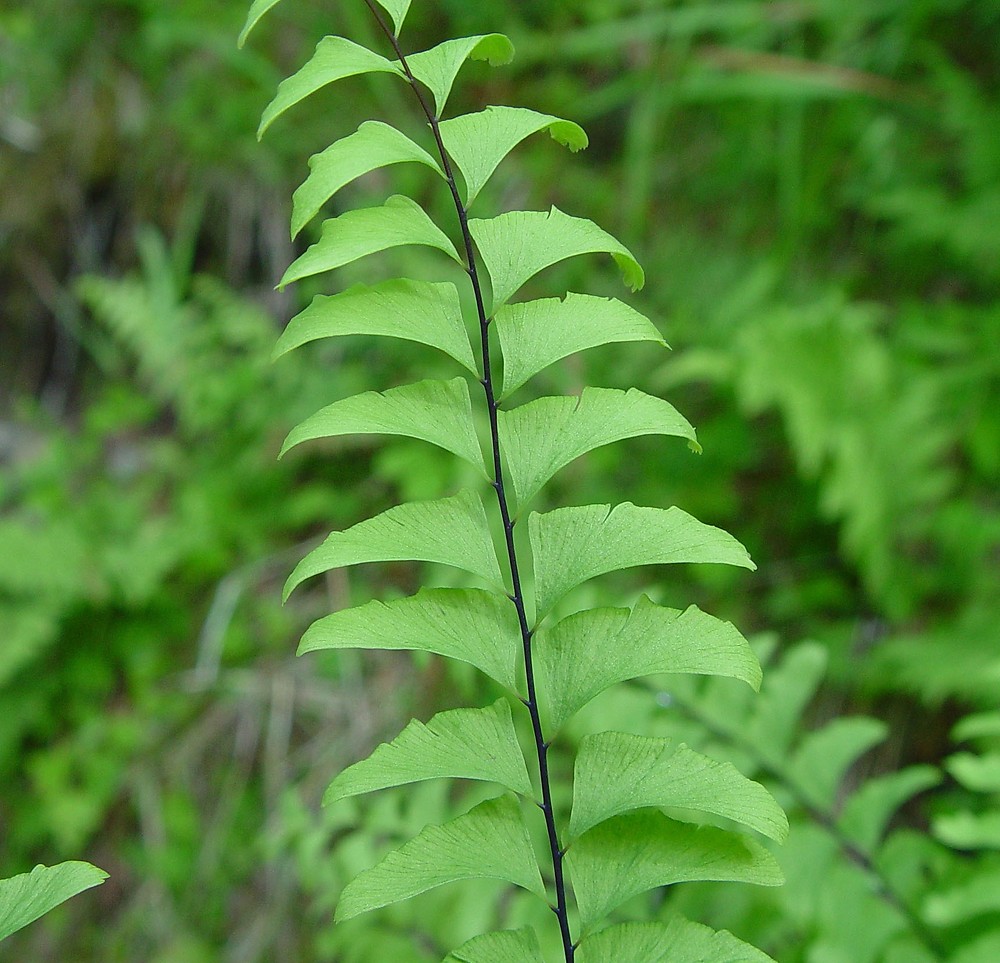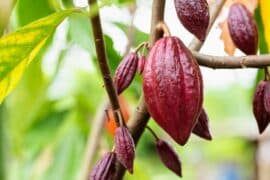Green Mountain Maidenhair
(Adiantum viridimontanum)

Description
Adiantum viridimontanum, commonly known as Green Mountain maidenhair fern, is a rare fern found only in outcrops of serpentine rock in New England and Eastern Canada. The leaf blade is cut into finger-like segments, themselves once-divided, which are borne on the outer side of a curved, dark, glossy rachis (the central stalk of the leaf). These finger-like segments are not individual leaves, but parts of a single compound leaf. The "fingers" may be drooping or erect, depending on whether the individual fern grows in shade or sunlight. Spores are borne under false indusia (rolled flaps of tissue) at the edge of the subdivisions of the leaf, a characteristic unique to the genus Adiantum. Until 1991, A. viridimontanum was grouped with the western maidenhair fern, A. aleuticum, which grows both in western North America and as a disjunct on serpentine outcrops in eastern North America. At one time, A. aleuticum itself was classified as a variety (A. pedatum var. aleuticum) of the northern maidenhair fern, A. pedatum. However, after several years of study, botanist Cathy Paris recognized that A. aleuticum was a distinct species, and that some of the specimens that had been attributed to that taxon (group of organisms) were a third, hybrid species intermediate between A. pedatum and A. aleuticum. She named the new species A. viridimontanum for the site of its discovery in the Green Mountains in Vermont; it has since been located in Quebec and in one site on serpentine in coastal Maine. A. viridimontanum is difficult to distinguish from its parent species in the field. It can generally be separated from A. pedatum by the shape of the ultimate segments (the smallest divisions of the leaf), and by its habitat on thin, exposed serpentine soils rather than in rich woodlands. It more closely resembles A. aleuticum; however, the stalks of the ultimate segments and the false indusia are longer and the spores larger. Due to its limited distribution and similarity to other Adiantum species within its range, little is known of its ecology. It thrives on sunny, disturbed areas where ultramafic rock is covered with thin soil, such as road cuts, talus slopes, and asbestos mines. Individual plants seem long-lived, and new individuals only infrequently reach maturity. It is one of four species endemic to serpentine in eastern North America and is considered globally threatened due to its habitat restrictions.
Taxonomic tree:







